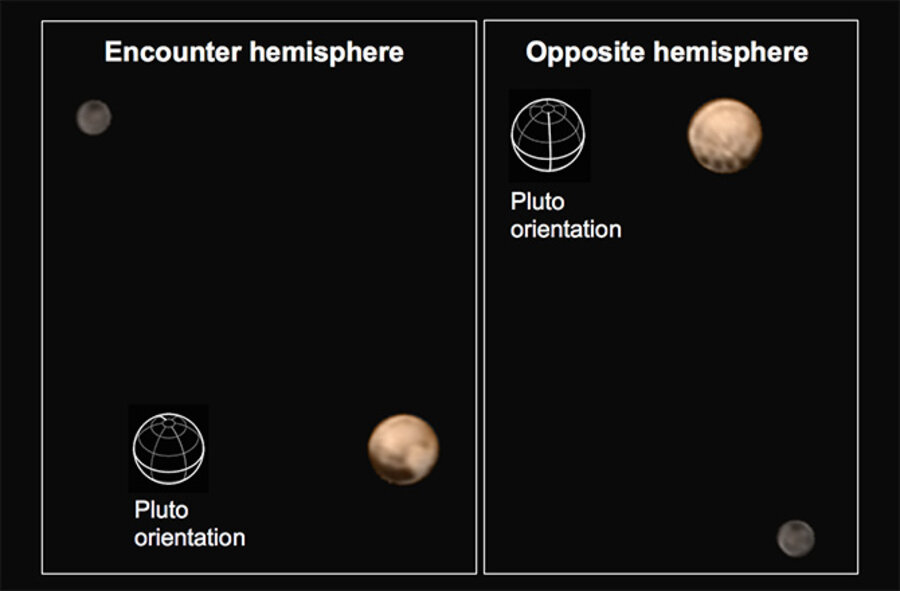NASA discovers mysterious dark spots on Pluto
Loading...
New color photos of the dwarf planet Pluto were released Wednesday afternoon by NASA’s New Horizons mission. The photos reveal a series of dark spots about 300 miles in diameter, something scientists have not seen before.
The mission found the two sides of the planet are distinct from each other; one face is smooth, while the other holds peculiar spots. The dark spots appear to be at the base of the planet in the photos, which is a result of Pluto’s tilt; if the planet were aright, the spots would appear to be in the middle of the planet.
‘It's a real puzzle – we don't know what the spots are, and we can't wait to find out,’ said New Horizons principal investigator Alan Stern of the Southwest Research Institute, Boulder in a press release from the mission.
The New Horizons team members were able to create color photographs, which show what Pluto would look like from the perspective of the spaceship, by combining black-and-white images of Pluto and Charon (one of Pluto’s moons), from the spacecraft's Long-Range Reconnaissance Imager (LORRI), with lower-resolution color data from the Ralph instrument. The combination of the detail from the black and white photos, with the color enabled the scientists to present an accurate depiction of the two sides of the lonely planetoid.
The New Horizons mission is the first of its kind to explore the icy bodies that are found mostly in the Kuiper Belt beyond Neptune. It is believed that these planets reflect what other worlds, including Earth, were like before the planets condensed. Scientists hope to sample the chemical clues locked in these frozen tundras to gain a glimpse of what Earth and other planets were like in their primitive years. Exploration of these types of planets was placed on NASA’s list of most important missions for this decade, according to the New Horizons press site.
“[A]t least in our lifetimes I don't believe we'll be able to look at exoplanets like we're going to look at Pluto," said Jim Green, who heads NASA's planetary-science division in Washington, to The Christian Science Monitor in April.
The mission also discovered the presence of frozen methane on the planet, which was announced on Wednesday as well, confirming long held theories about the chemical composition of the planet. The race to the planet began in part because of fears that Pluto’s atmosphere would freeze to the surface before it could be explored.
However, ‘Pluto’s atmosphere is alive and well, and has not frozen out on the surface,’ said New Horizons deputy project scientist Leslie Young, Southwest Research Institute, Boulder.
The $700 million mission was launched in 2006, with the goal of returning the first-ever up-close looks at Pluto and its moons. The first color photos of the mission were released in mid-April and came from a distance of 71 million miles from the icy planet. The mission is currently 9.5 million miles away from Pluto and is set to reach the planet for a fly-by on July 14.








